
Estimated reading time: 10 minutes
Steiner MPS Introduction
Micro red dot sights (MRDS) have taken over the firearm industry, and consumers are now demanding factory firearms to be compatible with these systems. While this is great to see for the benefits red dots provide, the new trend seems to be pushing towards enclosed-emitter optics. These offer better reliability because a piece of lint or snow can no longer cover up the emitter and keep the red dot from appearing for the end user. Enclosed-emitter options have been limited until recently, and Steiner is joining the competition to create more rugged micro pistol sights with the release of the MPS.
Table of contents
Steiner Durability
Aiming to replicate “mil-spec ruggedness,” the MPS utilizes an all-metal construction to completely seal the emitter. Enclosing the emitter allows the MPS to protect the LED from debris. It keeps the red dot displayed as long as the glass is not covered. If snow or dirt covers the glass on the front of the optic, users would still be able to shoot when both eyes are open by superimposing the red dot over the foreground the other eye is seeing. The housing protrudes past the window to block objects from reaching or harming the front lens. This is the biggest advantage I think the MPS provides over the Aimpoint ACRO P2. While using the optic to ram against objects to rack the slide isn’t a common necessity, it looks like the MPS was built to take the abuse and protect the front lens.

Throughout my testing, I never had any issues with this optic. It held up great to hundreds of rounds when mounted to slides of various pistols. It continued to run great when mounted to a shotgun shooting buckshot, slugs, and birdshot.


Size/Clarity of Steiner MPS
The window is .83 inches wide by .63 inches tall which provides a good amount of glass to view through. Clarity is good with the glass on this optic while there is only a light blue tint visible when looking through the MPS. There is no edge-to-edge distortion like there is with the Trijicon RMR.
One of my complaints about the MPS comes from Steiners “enhanced sidewalls.” These make the optic look blocky and give me a slight perceived tunnel vision. I love the large, unobstructed field of view optics such as the Trijicon SRO provides, but the MPS is unquestionably much more rugged and durable. The thicker sidewalls give the MPS what Steiner says is a “best-in-class shock rating,” but there is a balance between durability and functionality. The window is plenty big, and the sidewalls are very comparable to an RMR. In the end, this optic remains much more rugged than most pistol optics. All while remaining quick and easy to use.
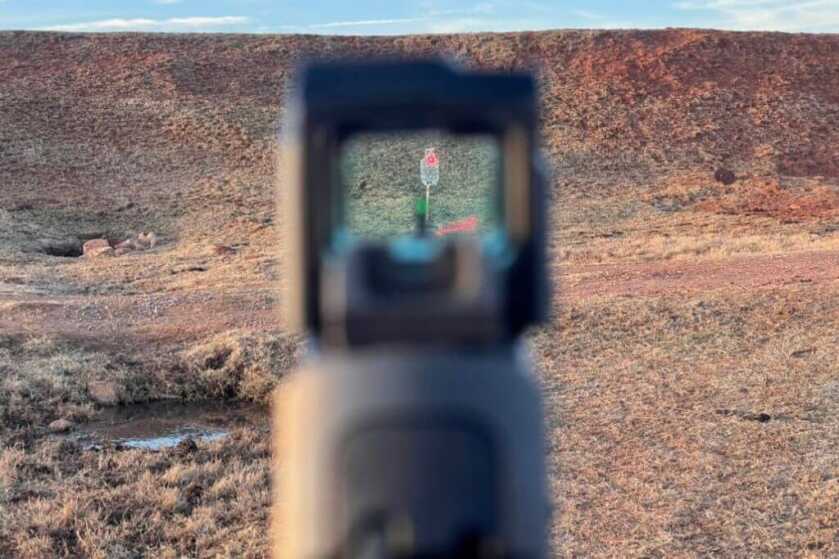
Mounting the Steiner MPS
The MPS tips the scales at 2.05 oz with an overall length of 2.17 inches long. Designed to work with existing mounting systems, this sight uses an Aimpoint ACRO footprint. Steiner claims it can be mounted on any Doctor plate, and several other companies are making some adaptor options. Steiner includes an ACRO plate, but I found that the cut through the cut in the top of the rail wasn’t wide enough to accommodate normal fastener heads, preventing them from securing the baseplate.
I had the same issue with the optic cut Smith & Wesson M&P’s, as their screw heads could clear the top of the rail, but did not sit flush with the bottom and interfered with the MPS preventing it from being mounted. I found a few other issues too.
The screw set that came with the MPS did not thread into an FN509CC Edge slide. The pistol screw set used fastener heads that were too wide to work with the Steiner baseplate. I ended up speaking with Apex Tactical and they sent out a baseplate to use which fit like a glove. However, throughout this process, I discovered that a small number of MPS optics may end up walking loose if the tolerance range is wrong from any given baseplate.
To Fix That…
To address this issue, Apex Tactical is making the “Super Clamp” for the MPS with an MSRP of $20. The clamp is not needed unless the ACRO happens to be in the highest 5% of the tolerance range. However, this should resolve any potential issues. Throughout my testing, the MPS I was loaned to review torqued down just fine and did not need to use the Apex Tactical Super Clamp.
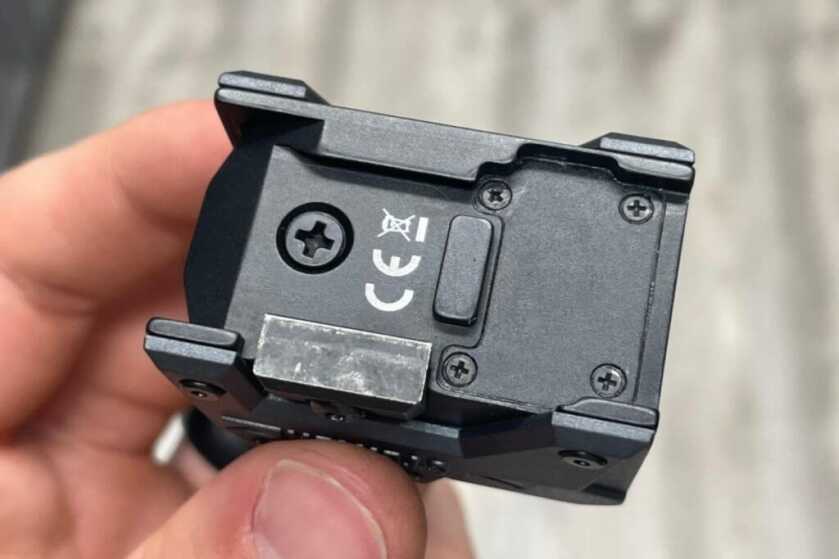



Reliability of Steiner MPS
One issue I did encounter was cycling issues with the FN509CC Edge. While I don’t think this optic should be blamed, it’s worth noting that not all pistols function efficiently with heavier enclosed-emitter pistol sights. This is not unique to the MPS.
However, it will need to be addressed for pistols in the coming years as closed-emitter optics become the standard. Other than this, the optic itself held up great and ran without issue.
SEE MORE: Steiner MPS (Micro Pistol Sight) Approved for Duty by Texas LE Departments

Brightness Settings of Steiner MPS
The MPS has 8 brightness settings including two-night vision options for the red 3.3 MOA single dot this optic uses. Brightness can be changed by activating the raised rubber buttons on the side of the optic. The buttons produce an audible click and tactile feedback when pressed. They are smaller than I would prefer and are hard to distinguish the difference between the plus and minus buttons when not looking. Other than that though, they function just as they should.

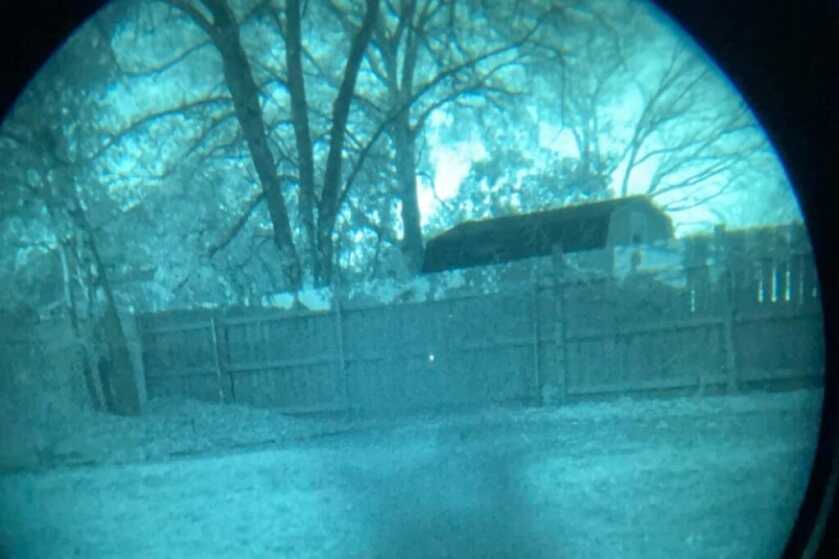
Battery Life
Battery life for the MPS is listed at 13,000 hours when set to the middle level of brightness, which is quite impressive. This allows users to never turn the optic off without worrying about always replacing the batteries. When the optic runs low on juice, it will have a flashing red light to indicate a low battery. It is powered by a single CR1632 and features a top-loaded battery compartment for easy changes without ever losing your zero.
The battery cap is kinda annoying since it takes a unique tool and flatheads don’t work the best for removal. I gouged it up pretty badly trying to remove it without the standard tool I left at the house.
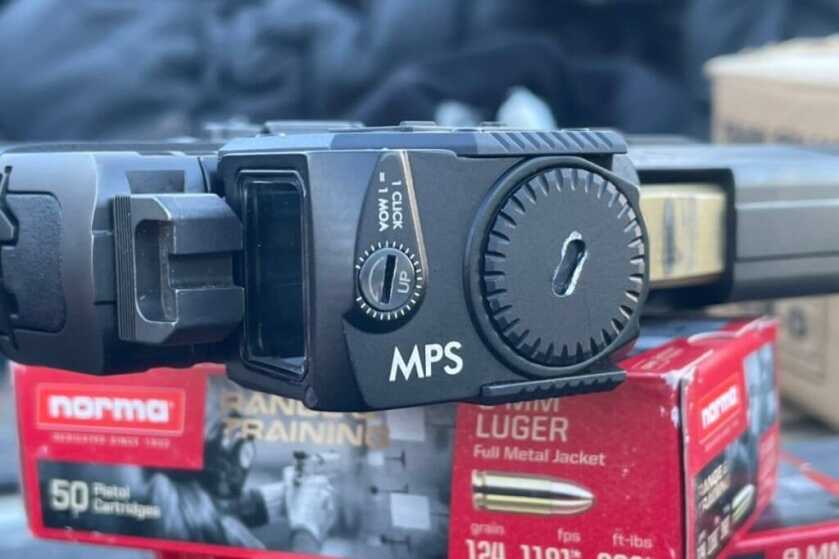
Something else I found to note is an auto-shutoff feature, which originally was standard, but was later removed. The first optics out of the factory had a 13-hour automatic shutoff that could be disabled by pressing and holding both brightness buttons for 10-15 seconds until the optic flashes.
The MPS I was sent to review has this feature, and when disabling it, the optic then remains on, but the brightness is locked. This lock-out feature is appreciated, but not being able to change the brightness while it is enabled is upsetting for me. I would have loved to see this optic without an auto-shutoff that could still have the brightness adjusted.
Adjustments
Sighting in the MPS is easy with the elevation and windage adjustments. Each click is audible and the adjustments are clearly labeled. A piece of brass works just fine for fine-tuning this optic in for your zero.
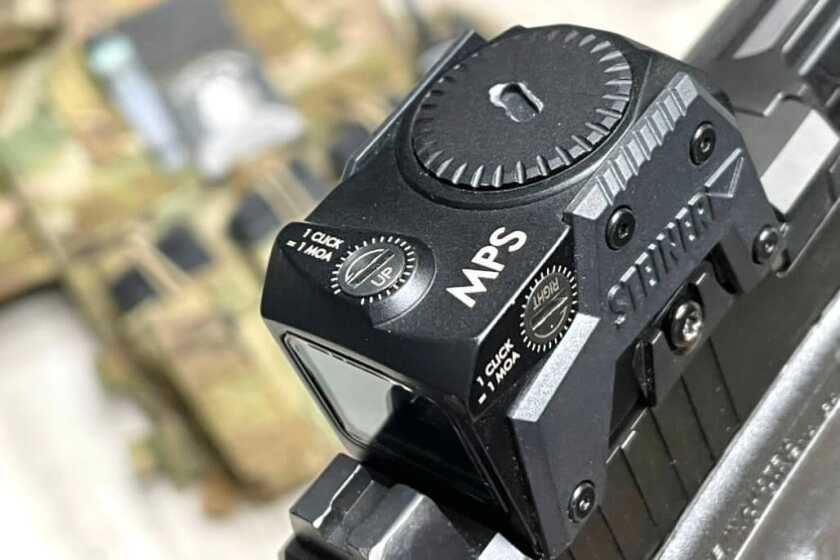
Conclusion
As more companies get into the red dot and enclosed emitter space, innovation is sure to follow. There are pros and cons to everything, and finding what works best for your situation is what it all comes down to.
The Steiner MPS is a great micro red dot sight and is quite rugged. Priced at an MSRP of $574.99, the Steiner MPS stands out in the market with its unique features. These characteristics could make it the optimal choice for your specific needs.
*** Buy and Sell on GunsAmerica! ***


I’m sorry to say it, but this is one ugly-looking red dot when put on a pistol. On a rifle or shotgun, its bulky and blocky design won’t be as noticeable and won’t have the problem of finding a holster to fit it.
While it may be tough enough to hammer in nails, that’s not a key feature I value.
At $579, it’s not exactly a bargain either (and real hammers are much cheaper as well).
I’m going to stick with my Trijicon and give it more tender loving care.